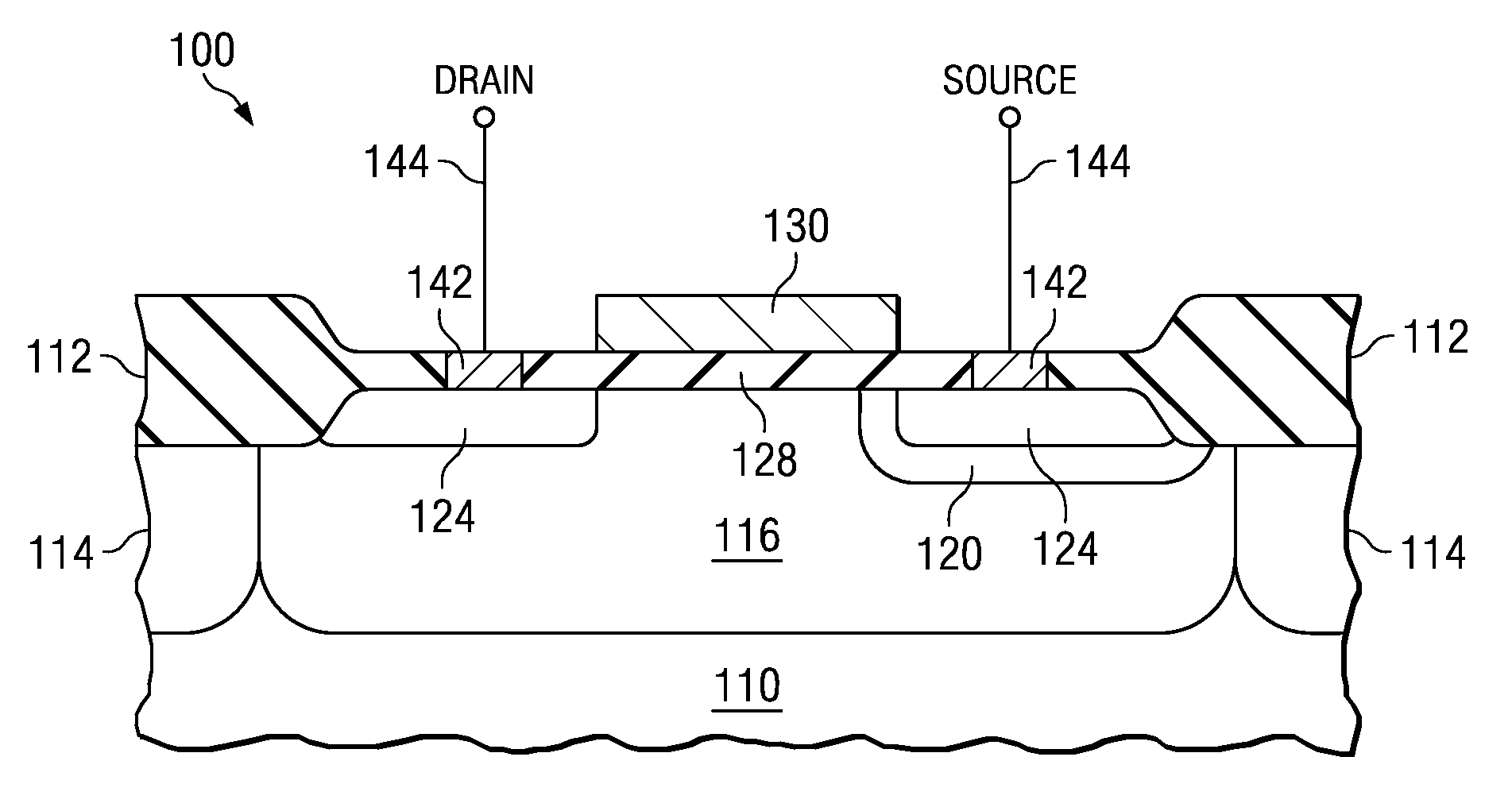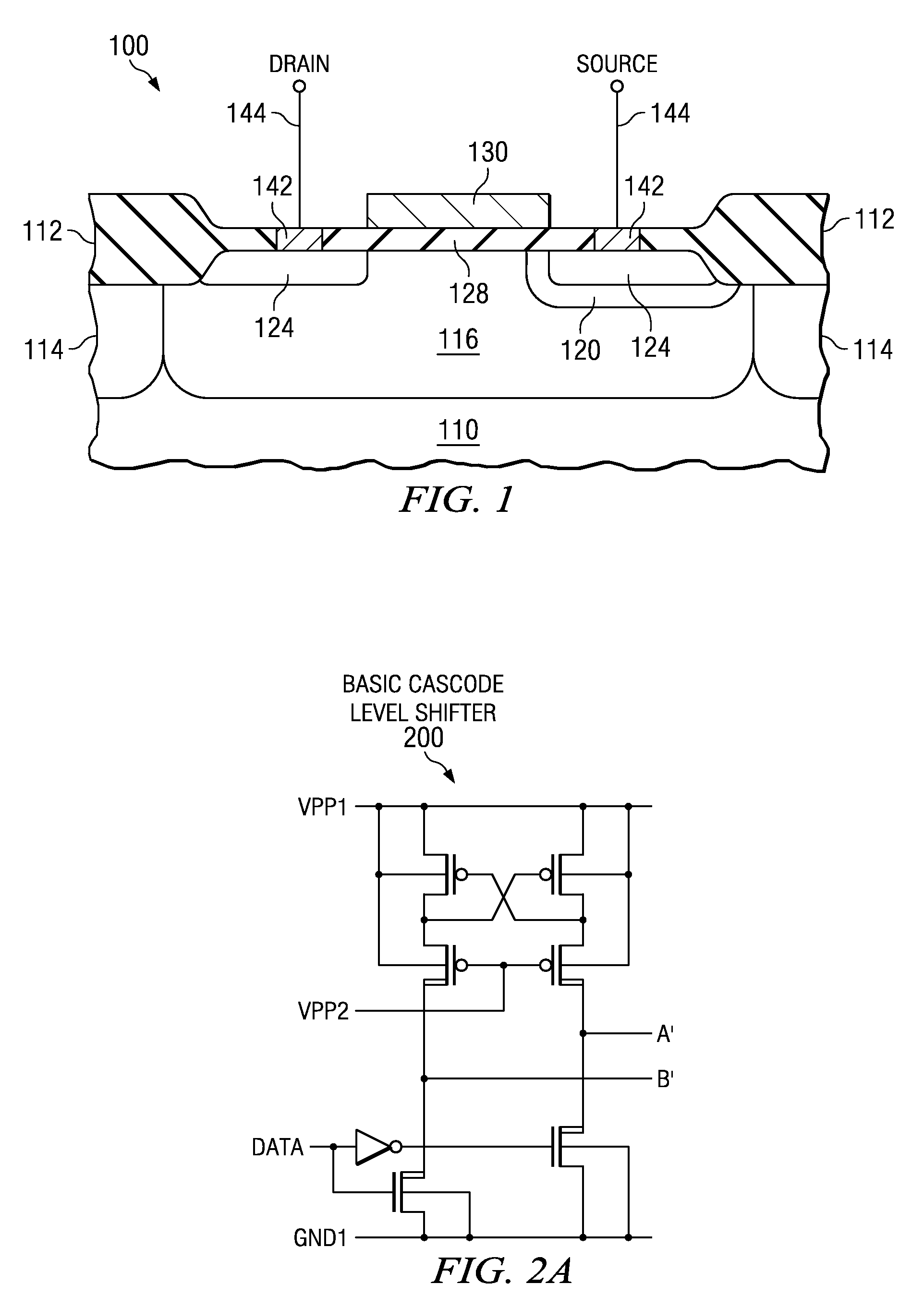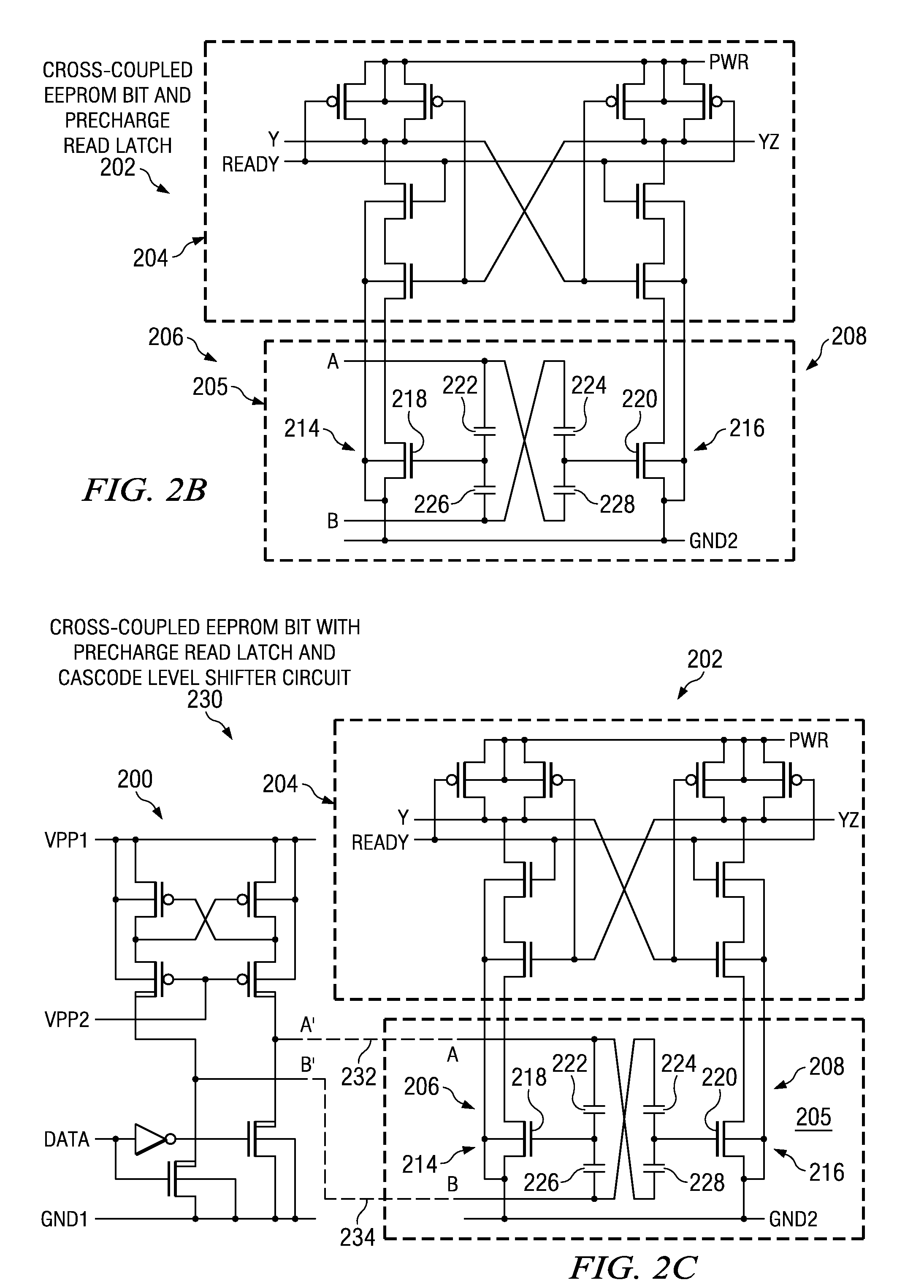Embedded EEPROM array techniques for higher density
a technology of eeprom array and eeprom array, which is applied in the field of single-level poly and floating-gate eeprom array structures, can solve the problems of enabling writing to unselected memory cells, and achieve the effect of reducing wafer area and simplifying structur
- Summary
- Abstract
- Description
- Claims
- Application Information
AI Technical Summary
Benefits of technology
Problems solved by technology
Method used
Image
Examples
Embodiment Construction
[0050]The present invention will now be described with reference to the attached drawings, wherein like reference numerals are used to refer to like elements throughout. The invention provides an improved embedded EEPROM array structure comprising single-level polysilicon (SLP) EEPROM memory cells (e.g., nMOS and pMOS cells) utilizing floating-gate storage technology. The array of EEPROM memory cells are programmed and erased using a novel half-write programming method. In the half-write programming scheme, row and column drivers of the array apply a full recommended programming voltage (VPP) across selected cells to be programmed or erased and also apply a half-write or mid-level voltage (e.g., half the programming voltage, VPP / 2) or zero voltage to the remaining unselected cells of the array. The half-write voltage VPP / 2 avoids disturbing the unselected cells and limits the voltage between any two rows or columns (or nodes) to the half-write voltage level. An unexpected result of ...
PUM
 Login to View More
Login to View More Abstract
Description
Claims
Application Information
 Login to View More
Login to View More - R&D
- Intellectual Property
- Life Sciences
- Materials
- Tech Scout
- Unparalleled Data Quality
- Higher Quality Content
- 60% Fewer Hallucinations
Browse by: Latest US Patents, China's latest patents, Technical Efficacy Thesaurus, Application Domain, Technology Topic, Popular Technical Reports.
© 2025 PatSnap. All rights reserved.Legal|Privacy policy|Modern Slavery Act Transparency Statement|Sitemap|About US| Contact US: help@patsnap.com



